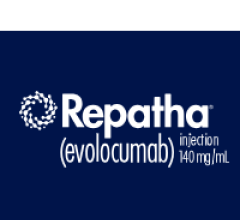
Getty Images
October 15, 2021 — The American Heart Association (AHA) released a new policy statement that offers policy recommendations for how the ideal cardiac system of care should be designed and implemented to ensure that patients with ST-elevation myocardial infarction (STEMI) receive the best evidence-based care at each stage in their illness.
The policy statement “Systems of Care for ST-Segment-Elevation Myocardial Infarction (STEMI),” was published this week in the AHA journal Circulation.[1]
The AHA said converting advances in scientific knowledge and innovations in cardiac care into improvements in patient outcomes requires comprehensive cardiac systems of care optimize cardiac care delivery. The new recommendations support policies that standardize the delivery of cardiac care, lower barriers to emergency care for STEMI heart attacks, ensure patients receive care at appropriate hospitals in a timely manner and improve access to secondary prevention and rehabilitation and recovery resources after a heart attack.
Improvements in cardiac systems of care are necessary to ensure scientific advances in the treatment and care of patients to improve patient outcomes. The policy statement comes as STEMI systems of care have seen significant improvement resulting from the American Heart Association’s Mission: Lifeline program, a national initiative to advance systems of care for patients with STEMI and other acute disease states. Since Mission: Lifeline was established in 2007, it has significantly increased timely access to percutaneous coronary intervention for patients with STEMI, resulting in declining morbidity and mortality rates and increased research that has improved understanding of effective STEMI systems of care.
However, significant barriers and opportunities remain that require changes and improvements in public policy.
“We can save more lives from the most serious heart attacks, and we know the policy changes that will allow us to do so,” said Alice Jacobs, M.D., FAHA, the statement’s lead author and vice chair for clinical affairs in the Department of Medicine at Boston University Medical Center. “From ensuring patients suffering a heart attack can access 911 emergency services, to guaranteeing they receive needed services including EMS triage and post-acute care, policy solutions can improve the efficiency of care protocols and save time at critical junctures to ensure every STEMI patient has the best chance of survival.”
Fully 85% of the U.S. population lives within reach of a STEMI system of care.[1] However, 40% of patients do not call 9-1-1 and instead go to their local emergency department.[2],[3] This can delay life-saving medical intervention by more than 30 minutes on average, decreasing the ability of coordinated response and care across all intervention teams and increasing the likelihood of acute heart failure or cardiac arrest.[4] Studies show that although 41% of patients arriving at the emergency room with chest pain/angina-equivalent symptoms receive an echocardiogram (ECG) within 10 minutes, women experience significant delays (nearly 20 minutes longer than for men). Regional STEMI systems perform better at decreasing sex and age disparities.[5],[6],[7]
“It takes our health care system an average of nearly 20 minutes longer to provide women the same emergency cardiac care they provide men. This is unacceptable, at a life-or-death moment,” said Jessica Zègre-Hemsey, Ph.D., R.N. statement co-author and associate professor of nursing at the University of North Carolina at Chapel Hill. “Taking the best care of patients requires a strategic policy playbook that ensures everyone on the care delivery team knows how to maximize a patient’s chances of survival and reduce health inequities.”
Steps For Better STEMI Heart Attack Care
The statement’s specific policy recommendations include:
• Public Awareness and Community Education: Increase culturally diverse community education programs and mass communications on signs and symptoms of heart attacks, the need to immediately call 9-1-1 and the importance of bystander CPR.
• Entry Points and Transport: State protocols for EMS transport should include destination practices and training for STEMI support and EMS agencies should be engaged in quality improvement and be represented at regional quality improvement meetings.
• Direct to Cath Lab: Improve plans for both referring and receiving hospitals as well as transport between hospitals to collaboratively perform evidence-based, lifesaving protocols to activate the cardiac catheterization lab, prior to arrival when appropriate.
• Transitions in Care: Opportunities exist for improvement at each juncture of a patient’s care, from pre-hospital care to discharge to cardiac rehab plans and systems changes will save lives.
• Post-Heart Attack Care: Recovery care and prevention of additional heart attacks should be standard practice within all health care systems and in accordance with guidelines for accountability and quality improvement. Health insurance plans and other third-party payers should provide incentives for participation in cardiac rehabilitation.
• Special Considerations for Telemedicine and Rural Health: To best reach the 15% of people in America who are not within reach of a STEMI system of care, particularly in rural areas, telemedicine protocols can expedite appropriate care. Rural hospitals should collaborate with regional STEMI receiving centers for access to expertise and support, develop prehospital response and triage protocols and should establish rapid interfacility transport mechanisms for higher levels of acute care.
• Financial Considerations: There should be support for the global reimbursement of the system of care for the patients with STEMI with recognition of each of the components, including referring hospital, receiving center, EMS transport and transfer and ancillary services.
This policy statement was prepared by the American Heart Association Advocacy Coordinating Committee.
Co-authors are Alice K. Jacobs, MD, FAHA, Chair; Murtuza J. Ali, MD; Patricia J. Best, MD; Mark C. Bieniarz, MD; Vincent J. Bufalino, MD, FAHA; William J. French, MD; Timothy D. Henry, MD; Lori Hollowell, MHIT, BSN, RN; Edward C. Jauch, MD, MS, FAHA; Michael C. Kurz, MD, MS, FAHA; Michael Levy, MD; Puja Patel, MS, MBA; Travis Spier, RN, MSN, NR-Paramedic, FP-C; R. Harper Stone, MD; Katie L. Tataris, MD, MPH; Randal J. Thomas, MD; and Jessica K. Zègre-Hemsey, PhD, RN.
References:
3. American Heart Association. Mission: Lifeline statistics. 2019. Accessed February 15, 2021.


 September 19, 2025
September 19, 2025 








